” Do not go where the path may lead; go instead where there is no path and leave a trail.”
– Ralph Waldo Emerson
This quote sounds a bit like Robert Frost’s “A road less traveled…” The sentiment really applies to horsemanship in a big way, I think. Or in a trail-savvy sense, we might have called this bush-whacking.
Over the past few months, I have been teaching and traveling and met many people and horses with different ideas about horsemanship. To some, the ideas and challenges set forth by Liberty Foundations and Equine Body Balance, which are what I teach, appear new. Yet they are old wisdom brought forth from the ways of horses, meeting the horse where she or he is.
A trail has been left in these instances, offering an entire universe in which to carve out new trails.
Some of my students and friends have been faced with some traditional ways of addressing horse ownership that have not been challenged for a long time. In some cases, these seekers are uncomfortable with the way horses are treated and how they have been expected to treat horses.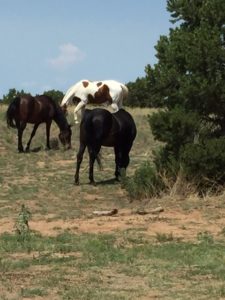
With the recent Olympic Games, the FEI is being brought to task for its turning a blind eye to the cruelty to the horse by very esteemed, famous riders. Similar issues finally came to the table this year with the banning of the UAE from FEI-sponsored endurance events, as a result of that country’s extreme cruelty and the number of deaths of horses as a result of over-riding. Where money is involved, these kinds of crimes sadly seem to proliferate. Yet I’ve also seen people over-ride their horses for the sake of a t-shirt or ribbon.
I have looked back at some of the old masters of dressage, Nuno Oliviera for one, and watched how gentle and connected he was with his horse. There is a softness in him, regardless of the tack used, that allows the true beauty of the relationship and the horse’s movement to shine through. Horse and rider are one. When asked why he rides, he said, ” I ride because I love horses.” Certainly he loved horses and horses loved him.
The Spanish Riding School has a long tradition of taking time with their horses, allowing them several years of maturing in beautiful pastures with their friends, and bringing them into basic slow training, with utmost patience. They are started in work at age six.
I listened to a retired Olympic veterinarian and judge speak recently here, who said that sadly, horses nowadays are started too young in competition, leading to their early breakdown. This is not the way it used to be.
So many forms of abuse are still used on a daily basis, because they are condoned by some famous trainer or another, or it is the way the person has always done it. Generations of horsemanship doesn’t make something right. Horses will in most part be submissive to forceful training but this doesn’t lead to relationship.
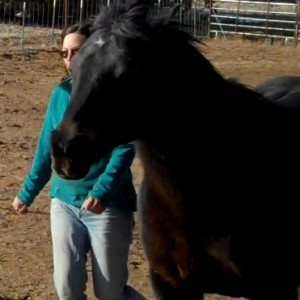 What does it matter that we have a relationship with our horses if they do what we want them to do?
What does it matter that we have a relationship with our horses if they do what we want them to do?
It matters because the horse can operate like a robot, without any real enthusiasm or joy, or connection with you. He may pull a cart, jump in competitions, and do what you ask, but he may not doing so because he loves to be with you and loves the activity shared with you. Some horses do love to perform, and when you see this, most likely behind their enjoyment is someone who understands them fully, who gives them a lot of space to be themselves and bring out their true potential.
The power of the trainer is huge; the trainer needs to know how much power she possesses and use it wisely, to guide the student and horse in their horse journey. Also the horse is very aware of the trainer who can make her do something, just by intention, and will do things for the trainer she won’t do for her owner. Rather, the trainer can be a joyful person with intention that the horse also wants to do something for.
The power of the barn mentality can be oppressive to the new owner or even to owners who know quite a bit and have to live within this culture. What is an accepted path in a lot of barns is the belief that some horses are just badly behaved. Or, that the horse needs something like a chain around its nose to be safely handled. Almost everyone in the barn agrees with this belief, almost like a family who perpetuates a belief about one of its own, not allowing that person to grow into its full self.
What I have begun to learn in the past few years is that some horses would prefer to work with their owners, not because their owners aren’t “making them do things” like the trainer might (a popular belief), but because they are seeking a special relationship with their owner. Some horses only want that one person riding them, finding out special nuances in their relationship. The fact that the trainer can ask and get a piaffe, a turn on the haunches, etc., is irrelevant to the horse. This horse’s need is more subtle, has nothing to do with winning ribbons or impressing anyone, although they often are pleased when they do something well.
In Equine Body Balance, we introduce the idea, another trail as it were, that 90% of all horse behavior is caused because of pain. The horse chewing on the wood railing is in pain, is bored, is not right with his environment. The horse rearing up when the saddle is put on is in pain, with the saddle, the expectation of a rider, or perhaps some other unknown. The horse unable to stand still is dealing with some inner turmoil that we might not know.
Without words as humans know them, the horse has only these physical ways to express herself. She cannot say, this saddle hurts like crazy and I want it off. Or, this rider keeps pulling at my mouth and I hate it. Or each time I’m brought out of my stall someone expects something of me and I get very nervous.
This is the voice of horses. While we continue to address horses as though they were mute, deaf and dumb, we will have mixed results. When we begin to look at their actions, their play with herdmates, if they’re lucky enough to have them, we will begin to learn from the horse, and listen in a new way.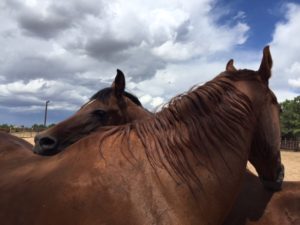
This is a new trail, but an old trail. It is a trail that allows trail blazing, into new frontiers of understanding between human and horse. It takes some exploration and discovery to understand and get to the bottom of what the horse needs.
At the same time we are meeting humans where they are in time and space, with all their beliefs of how things should be. The knowledge acquired from being around horses for a lifetime should be respected, while new pathways are being carved out. This way, all ineffective ways of relating to horses, can begin to fall away and be replaced by new information from the horse, based on relationship.
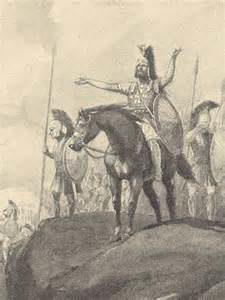 Xenophon said so eloquently in “The Art of Horsemanship,” “anything forced is not beautiful.” He knew, in preparing horses and men for battle, it wasn’t something horses had chosen to do. He also knew that by working in relationship with the horse, so much more could be accomplished, than by any display of force. He knew that demanding performance from a horse was not going to get what he needed. It is ironic that he knew this when the whole goal of his training was to present a formidable force of horse and rider warriors to the enemy!
Xenophon said so eloquently in “The Art of Horsemanship,” “anything forced is not beautiful.” He knew, in preparing horses and men for battle, it wasn’t something horses had chosen to do. He also knew that by working in relationship with the horse, so much more could be accomplished, than by any display of force. He knew that demanding performance from a horse was not going to get what he needed. It is ironic that he knew this when the whole goal of his training was to present a formidable force of horse and rider warriors to the enemy!
In today’s world we don’t have to ask nearly as much as his warriors needed to ask of a horse. But Xenophon knew that the horse would give his all when he felt respected and listened to.
When I have worked in environments that were not enlightened to gentle approaches, I put myself in a bubble so that I don’t come away discouraged about something I can’t change. If you have a horse in a situation like this, try the bubble and ask the horse what can we do to make things better for you? How can you negotiate this environment safely until a change can be made?
This is a way I have found to address it because if you go in with a lot of high-sounding 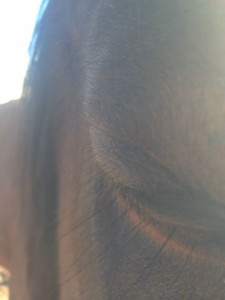 ideas and try to change the status quo, you will be shunned, just like a new horse barging into a well-established herd. Meet the situation where it is, be an example of kindness and gentleness, and take the horse you’re working with into confidence in this way.
ideas and try to change the status quo, you will be shunned, just like a new horse barging into a well-established herd. Meet the situation where it is, be an example of kindness and gentleness, and take the horse you’re working with into confidence in this way.
There are also many opportunities to take action on a larger scale, with signing petitions, protecting wild and abused horses, and creating change in performance for the well-being of the horse, etc.
It is all part of practicing mindfulness, in all you do.
Related links:
Build a bridge from the way we’ve always done things to true liberty
(c) Susan Smith, Horses at Liberty Foundation Training, Equine Body Balance (TM)
Please see my
Events for information on upcoming clinics and workshops.



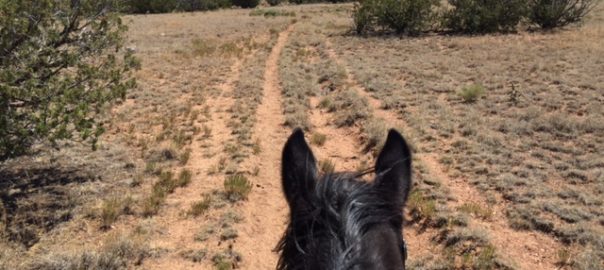
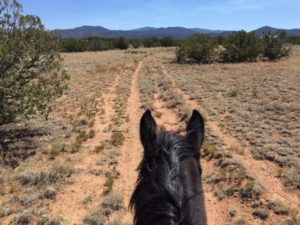
I stopped going to horse shows because it seemed as though horses and people were not having fun. In fact, both horses and people seemed downright stressed and miserable.
During one of the last shows I went to I saw a flashy Arabian gelding who was clearly having a good time. He was studying the horses and people around him, ears pricked, eyes wide, head up, prancing. He participated in a pleasure class where the other horses looked shut down, almost drugged. He was obedient, never out of control, but he did not win any ribbons. His owner didn’t mind, she had fun and she loved her wonderful horse.
I cherish the time I have spent with horses, meandering, discovering things together outside the world of competition. There is so much joy in connecting with a horse! I would never consider riding in a competition again, unless it involved old ladies strolling with their horses with no object in mind except maybe finding apples.
Thank you for reminding people what horses are all about!
Thank you so much for writing, Judy! Having a horse who is a willing participant in all we do, is what I most like to see. 🙂